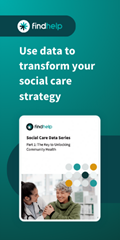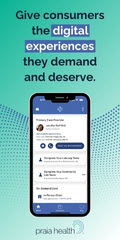(Cough, the same kind of dingbat who doesn't think autistic people play BASEBALL. Of all the examples to choose...)
Curbside Consult with Dr. Jayne 11/4/24
Every year when the leaves begin their fall color change, I wonder if this will be the year that my healthcare system will get its act together to synchronize patient reminders with care that is already scheduled. Unfortunately, this year was the same as all the others, when I received a formal letter that reminded me to schedule my mammogram that has actually been scheduled at their flagship imaging facility for more than 365 days.
Because I’m a concerned patient who doesn’t want to delay her screening, and because I’m trying to run my own business and have already blocked my calendar for that day, I have to take the time to log in to my patient portal, confirm that the scheduled appointment is still there, and become generally aggravated by the process.
What bothers me the most is that among all the problems that healthcare organizations are coping with, this is a relatively easy one to fix. It also has a direct cost savings when paper mailings are eliminated, and depending on how the organization handles those mailings, the savings can be significant. It’s also better patient care, but no one at this organization seems terribly motivated to fix the issue.
While I was still feeling the low-level aggravation of the situation, I ran into a catchy headline: “Why Medicine is Bad at Customer Service – And How to Fix It.” The article starts with a recitation of the conveniences that many of us use on a daily basis – online shopping, streaming entertainment, and rapid delivery of food and consumer goods. It contrasts those with the struggles that people face trying to conveniently access medical services.
It offers good reminders of the relevant statistics, including that healthcare constitutes more than 17% of the US economy, with per capita spending averaging over $13K. It summarizes the hassles of individuals who are trying to access care, ranging from inefficient phone calls to provider offices to the complexities of insurance referrals, appointment scheduling, and time-sucking office processes. It asks the question, “What other business treats its customers so poorly, so frequently, and so predictably?”
As is typically seen in these kinds of articles, the author mentions other industries and how they compare with healthcare. Although airlines have low consumer rankings, they at least have price transparency and collect payment up front, which allows comparison shopping. The article also mentions cable TV as an example of a service that executives didn’t feel that consumers could do without, yet where there has been a revolution where customers opted for other services based on convenience.
The author says, “It’s time for the medical business to view customers as people with busy lives, not just a collection of body parts that periodically breaks down and generates revenue.” Having worked with multiple health systems in my career, I found that statement telling, but also that it leaves out part of the story. Health systems bank on the income from revenue-generating procedures in their communities and even seek it out. It seems like almost everyone has an orthopedic “Center of Excellence,” and those that I’ve seen have a higher advertising budget than any primary care or preventive service lines combined.
The article calls for healthcare organizations to embrace customer service and access by investing in telemedicine and neighborhood-based health services. It advocates for expansion of home-based treatment options. As someone who spent some time in a non-US healthcare environment it sounds a lot like what other developed nations have been doing for decades.
It also mentions the horrific appointment lead times that patients are experiencing for basic healthcare services. In my area, even with good insurance that has a wide network, the wait for a new primary care physician is up to 12 months. With Medicaid, the wait for certain subspecialties is approaching infinity because providers have stopped seeing those patients due to low payments. The article addresses this by calling for realignment of financial incentives, which isn’t a new topic. It notes that the shift to value-based care should drive greater attention to consumer desires.
Those of us who have worked on the care delivery side know that healthcare is a lot more complex than the processes that are needed to order an Uber to take you to the airport or to set up a recurring delivery of household products and groceries to your house. One of the elements that adds to complexity is our fragmented multi-payer system, where a patient’s access to care (as well as the cost of that care) can change every time they encounter a so-called life event, whether it’s a job change or a change in marital status. Even with stable insurance coverage, providers are constantly opting in or out of different plans as reimbursements change and they seek to cultivate an optimal payer mix for their practices. Budgeting for services also changes depending on where patients stand with respect to meeting their annual deductibles.
Another element is the for-profit system that adds rebates and kickbacks into pharmaceutical purchasing, sometimes making it so that patients can buy drugs cheaper without using their insurance than they can with it.
Speaking of being for-profit, another level of complexity includes providers that are hawking cash-pay procedures that may not be indicated for a particular patient based on established guidelines, further eroding patient trust in the medical system. One of my relatives recently ran into this with an optometrist who was pushing digital retina photographs for an otherwise healthy 18-year-old patient. Guess what? That procedure is not covered by insurance because its hasn’t been proven to be beneficial in patients. When the patient said no, they were treated like they were failing to follow medical advice, despite the fact that the person telling them that they needed the service was a receptionist with no medical credentials. In my opinion, trying to do that kind of retail-style upsell on patients who are seeking medical services is simply unconscionable. But it’s just another day in healthcare, apparently.
There is also an incredible amount of inertia present among healthcare organizations. Just try to talk about opening up patient self-scheduling with a care delivery organization that isn’t already allowing it and you’ll hear dozens of arguments against it even though countless organizations have implemented it successfully. I guess when a health system controls a certain percentage of the market due to choice-limiting payer contracts, they have less incentive to make things more convenient for patients because they know they have a captive audience.
When inertia has been present in the past, US lawmakers have stepped in to force change. It will be interesting to see if some of the new legislators who may be coming in following this week’s election have an appetite to improve the patient experience, or if we can expect more of the same.
If you could wave a magic wand and improve one thing in healthcare, what would it be? Leave a comment or email me.

Email Dr. Jayne.




















































































I am not asking for the moon here. You are talking about future appointment availability. I wish clinicians value patient’s time too. I want my appointments to start on time. People need to take time off to get to the appointments. The total disrespect all health systems show about patient’s time is appalling – someone just says “doctor is running a little late” – why are doctors always running late? Isn’t that a failure of planning?
The truth is, the patient’s time isn’t valued, either in the literal sense or the notional sense. It’s possibly the only asset in the healthcare system that isn’t measured, isn’t costed, generates no revenue, and shows no expenses. No one advocates systematically for the patient’s time except the patient, and that is a fragmented voice that can be ignored.
I just came up with an idea. Don’t get excited because it won’t work. But if the patients back-billed the physicians, that would at least surface the costs of late appointments. I’d prefer that ALL the patient’s time, not just the late portions, be billed, because that would incentivize the system to continuously improve (as opposed to simply stopping when they hit on-time targets).
However the physician’s time is expensive and will routinely cost more than the patient’s. As long as that holds true, I have little faith such a system will change much.